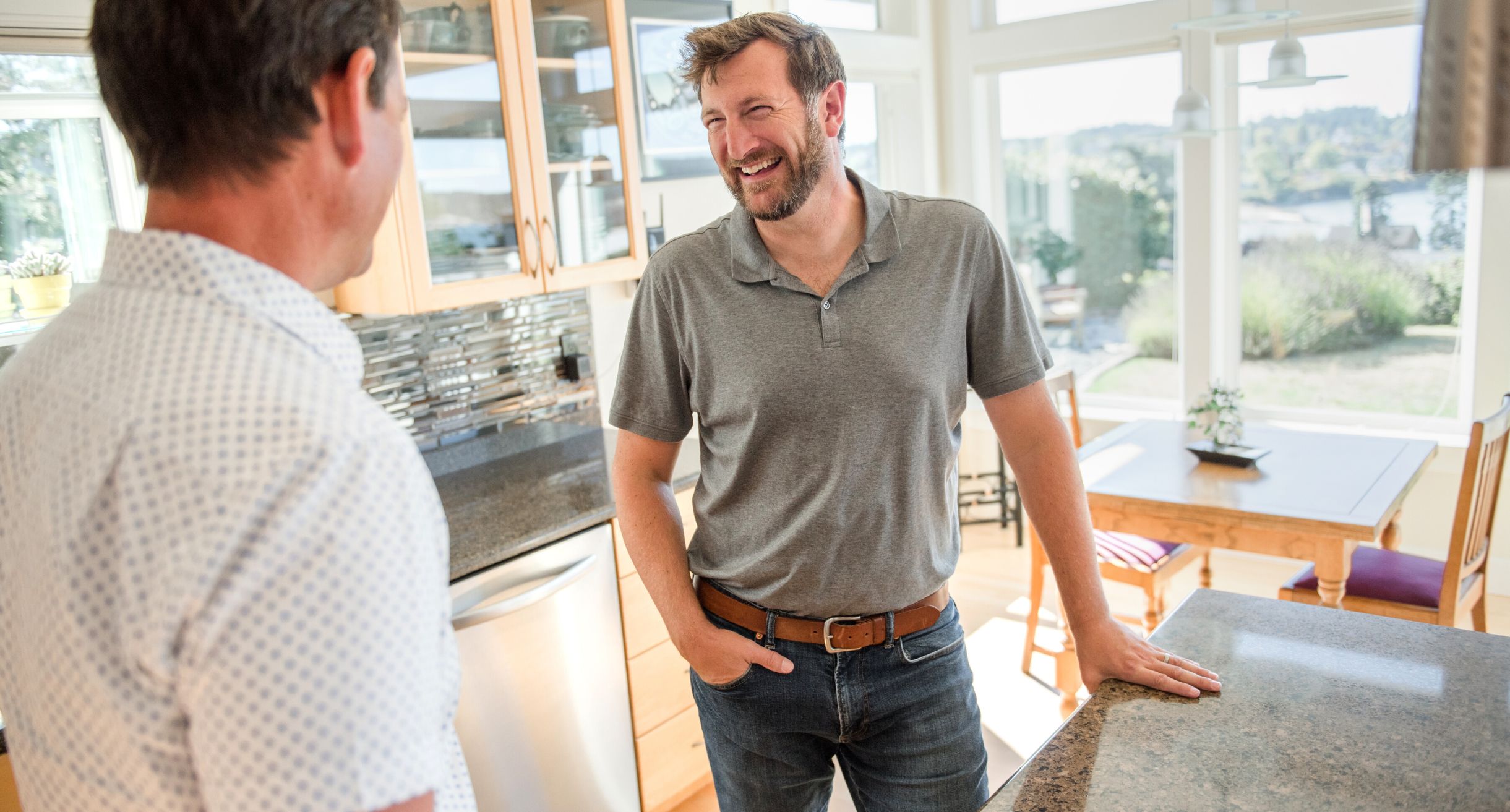Why Are There Tsunami Signs on Whidbey Island?
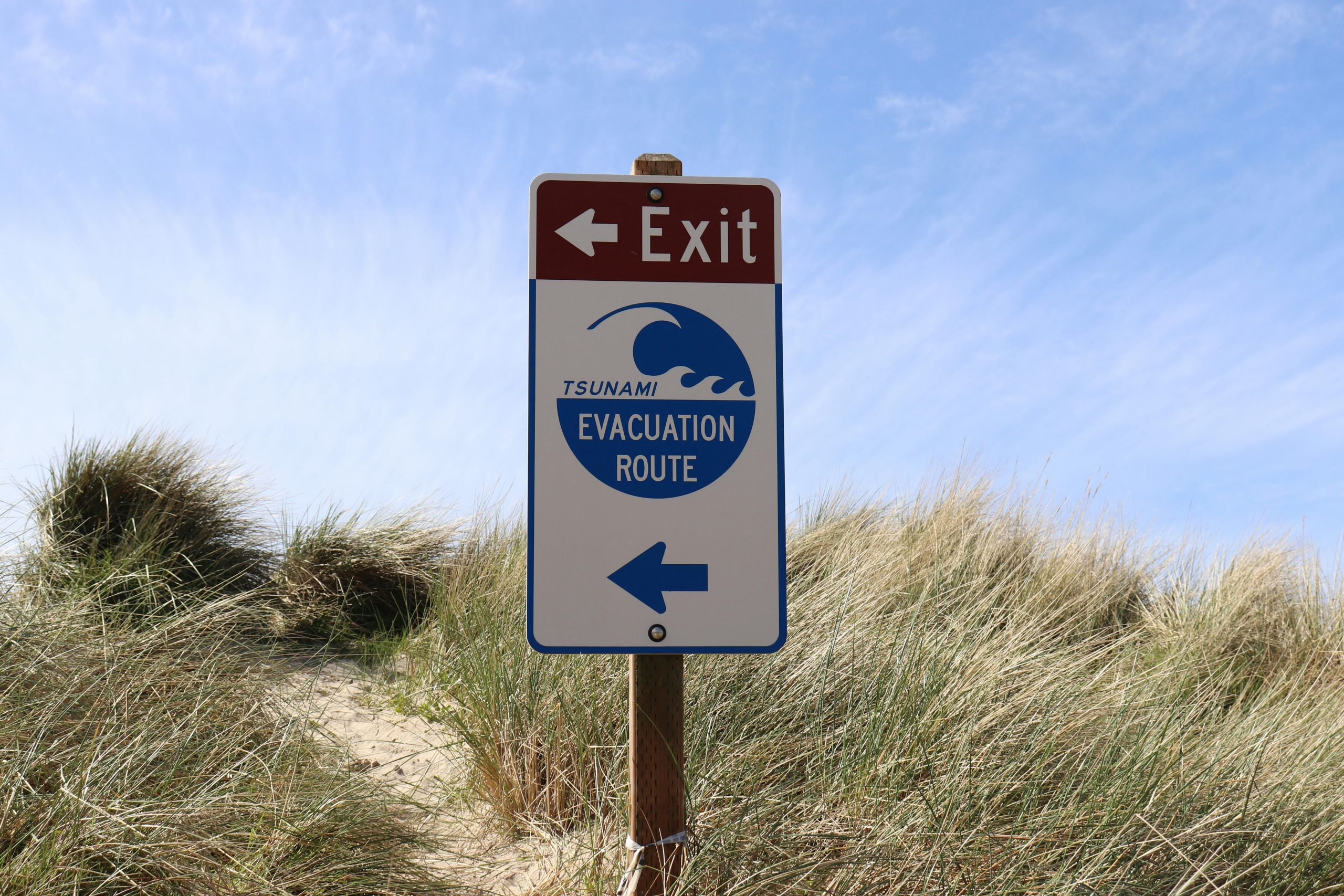
If you have spent any time on Whidbey Island, it is likely that you have noticed the tsunami evacuation signs posted along roads and beaches. These signs may raise questions for newcomers or visitors. Why does an island surrounded by serene waters have tsunami warnings? The answer lies in the region’s unique geography and seismic activity.
The Risk of Tsunamis on Whidbey Island
Whidbey Island is located in part of the geologically active area known as the Cascadia Subduction Zone. Roughly 600-miles of fault line runs from Northern California to British Columbia, where the Juan de Fuca tectonic plate meets the North American tectonic plate. When these plates shift or collide, they can trigger large earthquakes — and in some cases, tsunamis.
Tsunamis are massive ocean waves typically caused by undersea earthquakes or volcanic activity. While Whidbey Island is somewhat sheltered by its location in Puget Sound, a major earthquake along the Cascadia fault or from another undersea event could generate a tsunami that impacts the island’s coastal areas.
Why Are There Evacuation Routes?
The tsunami evacuation signs posted throughout Whidbey Island are part of a broader safety plan to help residents and visitors reach higher ground quickly in the event of a tsunami warning. Coastal towns like Langley, Coupeville, and Oak Harbor have low-lying areas that could be vulnerable to flooding if a tsunami were to occur.
The signs are strategically placed to direct people away from beaches, marinas, and waterfront areas toward safer locations on higher ground. Being aware of these routes and having a plan in case of an emergency is an important part of living in a coastal region. Island County does a great job of providing tsunami information including a high ground map that you can visit by clicking here.
How Likely Is a Tsunami on Whidbey Island?
The likelihood of a large tsunami hitting Whidbey Island is low, but not impossible. Scientists and geologists monitor the Cascadia Subduction Zone closely, and while large earthquakes are rare, they have occurred in the past. The most notable event was the 1700 Cascadia Earthquake, which triggered a tsunami that impacted coastal communities from Washington to Japan. You can read more about what that looked like on January 15, 2022 by clicking here.
While Whidbey Island may not face the same tsunami threats as coastal communities on the open ocean, it is still vulnerable to localized tsunamis caused by underwater landslides, known as “submarine landslides.” These could result from large earthquakes or other geological shifts in Puget Sound.
What Should You Do in the Event of a Tsunami Warning?
In the rare event of a tsunami warning on Whidbey Island, the most important thing to do is move to higher ground immediately. Familiarize yourself with the evacuation routes marked by the tsunami signs, and always follow guidance from local authorities and emergency services.
Here are a few tips to stay safe:
· If you feel strong shaking from an earthquake, don’t wait for an official warning — head to higher ground immediately.
· Know your evacuation routes and have a family emergency plan in place.
· Stay informed by signing up for local emergency alerts and having a battery-powered radio on hand.
Preparedness Brings Peace of Mind
While the thought of a tsunami can be unsettling, it is most important to remember that Whidbey Island’s local authorities and emergency response teams are well-prepared. The presence of tsunami signs and evacuation routes are simply a proactive measure to ensure everyone’s safety.
By staying informed and knowing what to do in an emergency, you can enjoy everything Whidbey Island has to offer with peace of mind. After all, living on this beautiful island means being prepared — and being part of a community that looks out for one another. Connect with us.
Greenbank Farm

Greenbank Farm was originally established in 1904 by Calvin Philips, then sold to loganberry farmer John Molz in 1940. The farm grew to become the largest loganberry-producing farm in the United States by 1970. Seven years later, the farm went up for sale. In an effort to retain its history and save the farm from becoming a residential housing development a collection of community governments purchased it. Today, the gorgeous barn still stands among the beautiful farmland attracting tourists and residents alike. Visitors enjoy a meal at one of the restaurants, perusing the fine art galleries, a walk along the trails, or a slice of the heavenly marionberry pie.
Check out the rest of Whidbey’s beautiful destinations from this series here.
Retirement in your future?
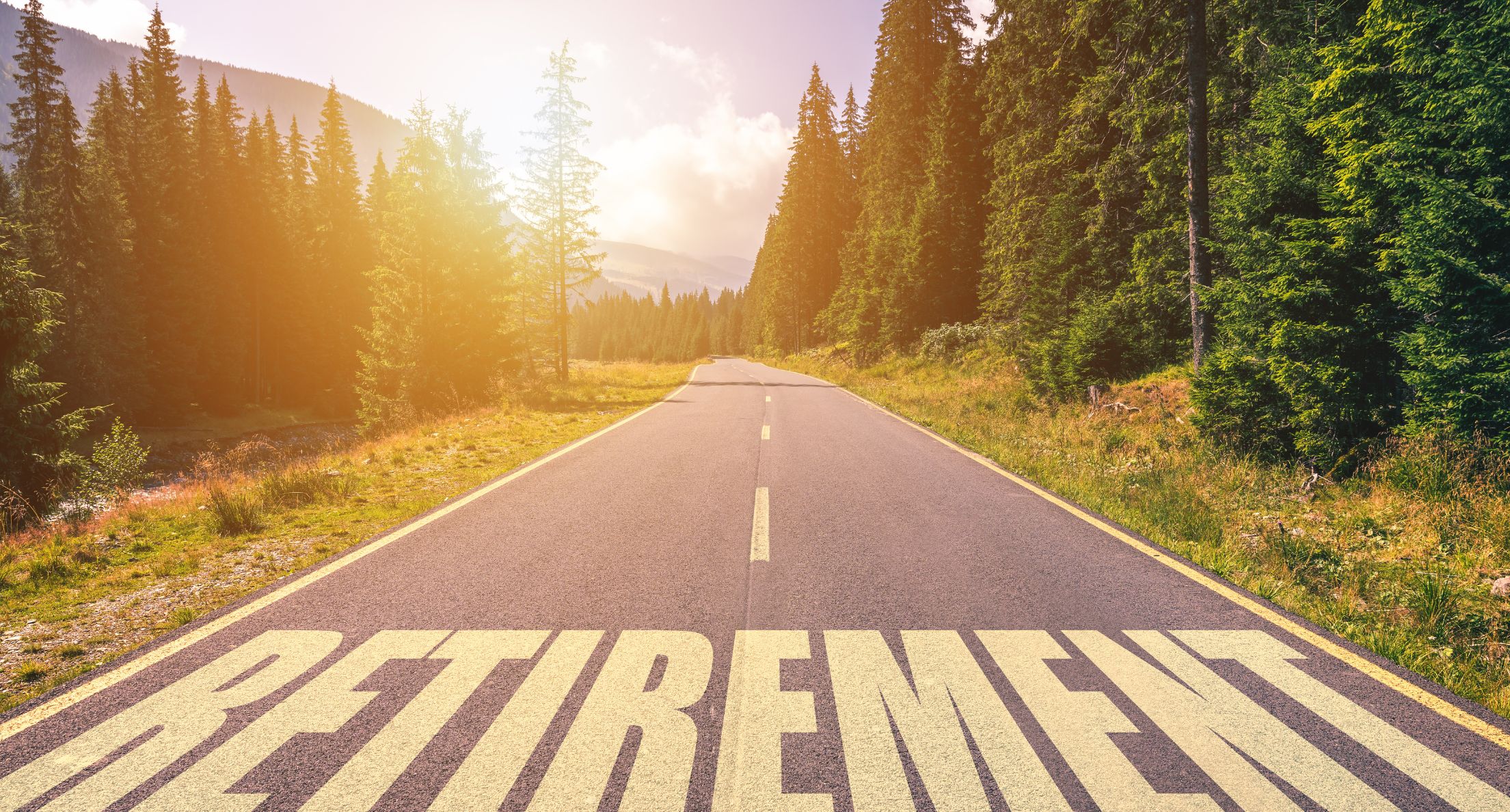
If retirement is in your near future, or perhaps you are already there (congratulations) you may find yourself wondering if staying in your home is still a good fit. When you live in a home for an extended period, it is normal for your needs to change as you progress through life’s milestones. You may find that your home is too big for the needs of this next chapter. Perhaps you have always had a dream destination in mind, whether to visit or to live or maybe you just want to be closer to family. Selling your home may just be the key to moving onto something that fits your life better.
Regardless of your why, understanding your options and the market can help you make the best next decision. We cannot stress enough that no one size fits all and suggest discussing your unique situation with a trusted Realtor. If you are not currently working with a realtor, connect with us. We will help find you the perfect match through a series of specific questions.
Follow along as we discuss why you might be in an advantageous position if you ARE considering a move and thinking about retirement.
Consideration 1: How long have you owned your home?
Today, people are living in their homes longer than they ever have in the past. The longer you live in the home the more likely that you are in a better position to sell. Let’s look at a few factors. The National Association of Realtors (NAR) shared that homeowners owned their homes for an average of six years between 1985 and 2008 whereas homeowners have been staying in their homes for an average of 9.2 years since 2009. See the graph below.

If you are like most homeowners today, you have been in your home for well over 5 years. If this is the case, it is an indicator that a move may be in your favor. Typically speaking, you have built significant equity after just 5 years in your home due to home price appreciation. The Federal Housing Finance Agency (FHFA) demonstrates this in their graph below.

If you have lived in your home for over 5 years, you might just be sitting on a large sum of money that could make your dreams a reality. The recent market has helped homeowners increase their equity by nearly 60% in the past 5 years. Those who have owned their homes since 1991 have experienced their home triple in value since they purchased it back in 1991.
Consideration 2: The Market
Currently, we are experiencing a sellers’ market. Home price appreciation is stable. There is a lack of inventory and a prediction that mortgage rates will decline. We have already begun to see the decline in rates. As rates drop, homeownership becomes an attainable option again for those looking to buy. If you are not currently working with an agent and would like to discuss a strategic plan, connect with us here.
Whether you wish to downsize, move to the destination of your dreams, have the funds to go on the vacation of a lifetime, or move closer to the ones you love, the equity in your home can help get you there.
No matter what your home goals are, a trusted realtor can help you discover the best options to get you there. They can help you sell your current home and get you into the that is right for life today.
Retirement in your future? Let’s connect and explore your options.
Weather in the Pacific Northwest
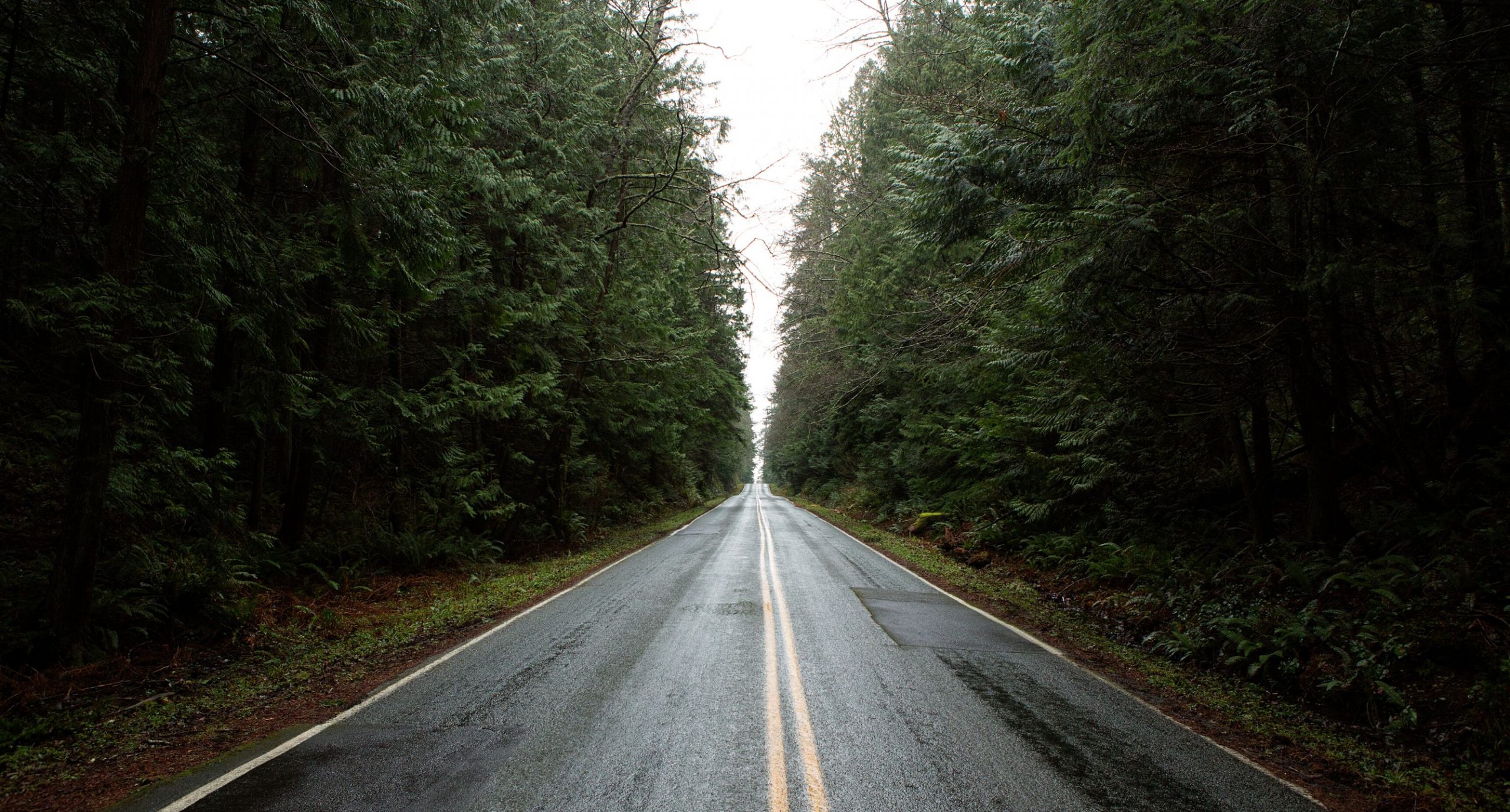
The Pacific Northwest, or PNW, is a region known for its varied and often unpredictable weather. Located in the northwest corner of the United States, the PNW is home to a diverse array of climates and landscapes, ranging from the rainy, temperate rainforests of the coast to the dry, high-desert regions of the interior.
One of the most distinctive features of the PNW weather is the rain. The region is home to some of the wettest parts of the country. Some areas receive over 100 inches of rain per year. While the rain can be a nuisance at times, it is also a vital part of the region’s ecosystem. The rain provides the water needed to sustain the lush forests and vegetation that thrive in the region.
In addition to the rain, the PNW is also prone to fog and mist, especially along the coast. These foggy conditions can last for days at a time, creating a unique and sometimes eerie atmosphere.
Weather on Whidbey Island
Whidbey Island, located in the northwest corner of Washington state, is no stranger to the PNW’s unpredictable weather. Located in the Puget Sound, the island is influenced by both the maritime climate of the coast and the inland climate of the region. As a result, the weather on Whidbey Island can vary significantly from one day to the next. Sometimes a sunshining clear skies day gives way to rain and fog in a matter of hours.
One unique aspect of the weather on Whidbey Island is its location in the rain shadow of the Olympic Mountains. The rain shadow effect occurs when moist air is forced up and over a mountain range. When this happens it causes it to cool and release its moisture in the form of rain or snow. As the air descends on the other side of the mountain range, it warms and becomes drier, creating a “rain shadow” region that receives less rainfall.
Due to its location on the leeward side of the Olympic Mountains, the areas of North and Central Whidbey Island experience this rain shadow effect, resulting in significantly less rainfall compared to other parts of the PNW. While the island still gets its fair share of rain and fog, it is generally drier and sunnier than the surrounding region. Less rainfalls makes it a popular destination for those seeking a respite from the rain.
Despite the often-variable weather, the PNW and Whidbey Island are beautiful and unique places to visit or call home. The diverse landscape and varied climate create opportunities for a wide range of recreational activities. Many people enjoy hiking and camping in the summer to skiing and snowboarding in the winter. So, whether you’re a seasoned resident or a first-time visitor, be prepared for a little bit of everything when it comes to the weather in the PNW and on Whidbey Island.
When you fall in love with the island and want to stay let us help you find your dream home. Connect with us here.
Who are you going to call
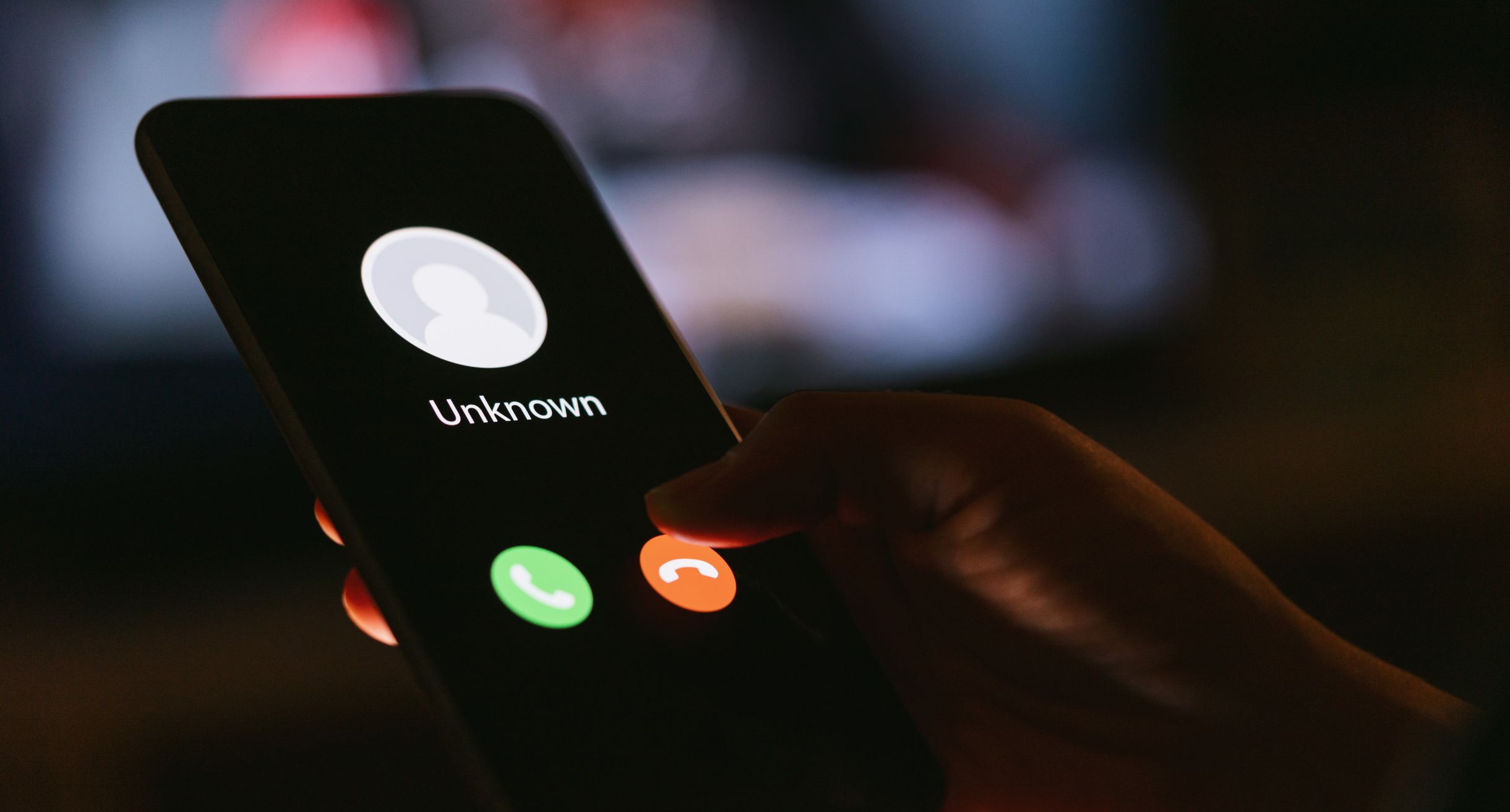
Who are you going to call? That’s up to you. How are you going to call? That’s up to you, too; but, that’s a shorter list. It is also easier to talk about. Welcome to Whidbey, or your new home, or your curiosity. Phone service on the island is unique for several reasons; and can even get into international issues. Here are some of your choices.
Landlines:
Landlines exist, and can frequently outperform more modern options. A direct connection between two phones can be clearer, simpler, and make sense in older homes. Landlines can also avoid issues about spots in a house where signals are blocked by things like masonry. They can also be handy during a power outage, if the provider keeps the lines charged. Even better is a provider that buries the lines so they’re less likely to be impacted, literally, by falling branches.
But, landlines have limits. Putting a landline in your pocket can be done, but is somewhat useless when out of range of the home’s base station. (e.g. Whidbey Telecom, Ziply)
Mobile Phones:
Welcome to the modern era when phones in pockets are taken for granted, as is roaming. One phone, one country, that’s pretty good. Cell phones, mobile phones, isn’t that what everyone uses? The major providers are here, which is definitely appreciated. As a solution, mobile phones are the dominant choice.
Mobile phones are the dominant choice, but not every provider can provide unlimited coverage. Can you hear me now? You can still hear people say that on a call as you drive through gaps in coverage. Ridges, buildings, and antenna blind spots can have you checking whether you have five bars, or as little as one bar, or even no bars. Electronic signals can’t be guaranteed to reach the base stations of the corporate carrier. Coverage is pretty good, but a temporary interruption while driving around isn’t as important as a poor signal at home. Check coverage for where you want to live.
Coverage Maps:
Find a home in the areas with your ideal coverage here.
When in doubt, drive there and check. If you are buying a home the home inspection time is a great chance to check cell reception too, make as many calls in as many spaces on the property as possible. If you get the opportunity, check in with the neighbors, possibly on social media, and learn what they use. (e.g. AT&T, T-Mobile, Verizon, US Cellular). Talk with your agent about their experience with coverage. Don’t have an agent? Connect with one here.
VIOP:
Keep in mind, some people want to live in those quiet pockets. There’s someone for everywhere.
Got a good internet connection but no cell signal? VOIP can be an option. Voice Over Internet Protocol routes your calls through the internet, not a phone landline or a cell tower. Some cell phones are already set up to choose the better path between a tower and the internet. That can be the best of both worlds. (e.g. Frontier, Vonage, Wave)
Did That Message Just Say Welcome to Canada?
Hello, Canada. Saying hello to Canada is easy enough. You can see it from the island. Wave at it. Your phone might be doing that too. The farther north and west you get on the island the greater the likelihood that your phone may connect with a tower in Canada. You can get charged for international roaming without leaving the US. Fortunately, your phone should tell you when it does that, but it is worth checking, occasionally. (e.g. Telus)
The Final Message:
The choices aren’t infinite, but there may be more than you want to research for your corner of the island. The denser the population, the more likely you’ll have plenty of choices, many of which run those big national ad campaigns. Our island’s more remote locations, however, can be so unique, so idiosyncratic, that it might make sense to visit and try calling friends and family.
As technology continues to invent new options, the choice continues to change. Now that satellite phones have progressed from specialized Globalstar handheld units to Starlink’s internet access a homeowner can create their own connection, assuming those pesky hills and bills don’t get in the way. If you’ve got power and the right view, you’ve got internet and phone; regardless of whatever might be interrupting everyone else’s day or night.
Who are you going to call? That’s up to you. How are you going to call? That’s up to you, too; but, now you may understand why one answer doesn’t apply to everyone. Thanks, Ma Bell and your old bakelite landline phones wired to a wall; but, we’ve become much more mobile, and hopefully more stylish. Make a call from Whidbey? You’ve got options. Try to call us now: 360.675.5953.
HALLOWEEN IS CREEPING CLOSER

As the crisp autumn air settles in, Halloween is creeping closer and it’s time to conjure up some devilishly delightful pumpkin carvings.
SPOOKTACULAR CARVING IDEAS:
Whether you’re a seasoned pro or a beginner, these spooktacular pumpkin carving ideas are sure to impress.
Start off with a classic Jack-o’-Lantern, featuring a toothy grin and triangle-shaped eyes that never go out of style. Or try a simple yet spooky ghost design with black paint or markers to create a hauntingly eerie look. If you prefer something more whimsical, carve a cute cat with pointy ears and whiskers to add a playful touch to your décor.
But… if you are feeling daring, go all out with a fierce dragon carving. Of course, it will require expert level skill and patience, but it is sure to leave everyone spellbound. For a more elaborate design, try carving a haunted house complete with spooky windows, a creaky door, and ghostly apparitions floating around – perfect for adding an extra eerie ambiance to your Halloween décor.
WHIDBEY ISLAND FARMS:
Once you have your design picked out, head over to one of Whidbey Island’s pumpkin patches to find the perfect pumpkin.
At the Greenbank Farm enjoy a fun day of picking your own pumpkins.
Case Farm offers over 50 years of experience in growing a variety of pumpkins.
While the Bayview Farmers Market has a pumpkin patch, it also offers a variety of vendors selling fresh produce, baked goods, and handmade crafts.
But don’t stop there – Whidbey Farm & Market and The Farm Stand K & R Farms also offer great pumpkin picking options. At the Whidbey Farm & Market, you can support local farmers and artisans while picking out your perfect pumpkin for carving and at The Farm Stand K& R Farms, enjoy a variety of fresh produce and family-friendly activities like a corn maze and ice cream.
HALLOWEEN FUN ON WHIDBEY:
To top off the fun, if you are looking for a spooktacular adventure, head over to the Haunted Barn In Oak Harbor. The haunted barn features creepy decorations, special effects, and live actors sure to send shivers down your spine.
No matter where you choose to pick your pumpkins or celebrate Halloween, make sure to enjoy the crisp fall weather and embrace all the spooky sights and sounds of the season. Happy haunting!
Firefighting Island Style

Firefighters, we respect them. We get out of their way when they’re racing to a scene. We crowd around their trucks when they’re at a fair or a parade. We can tend to think that every firefighter is like every other firefighter, hanging out at a fire station while waiting for a call that demands immediate action. Yes, and no.
But what does firefighting look like on an island? Follow along as we discuss firefighting island style.
Firefighting Island Style
Whidbey is a mix of five fire districts. Three County districts (North, Central, and South), the City of Oak Harbor, and the Navy.
Oak Harbor is a city with paid firefighters and a place where a lot is going on in a small space. Trucks have to navigate a grid of streets and the traffic on them. Houses are close and that can mean fires are close, too, but so are fire hydrants. There are plenty of stereotypes that can apply. Spotted mascot optional.
In most parts of the country that might be enough, but the island is large enough and long enough that some other solutions are necessary. If the neighborhood is remote enough, they may have some creative solutions to fight fires in the interim after getting to safety and making that call to 911. An easy situation to imagine is a waterfront house that may require a fireboat. It takes time to collect the crew, launch the boat, and power their way to the site – tides, currents, and weather allowing. A lot can happen in the first few minutes of a fire. Any help can be appreciated – and incredibly valuable.
Rural areas also have to guard against brushfires and barn fires. Long roads mean accidents can happen far from the station. Even places that are accessible by a pickup may be too windy and twisty to maneuver in a firetruck, which eventually also has to turn around and get back to the station. Some fires may even be on boats, both in the marina and off-shore.
A Unique Mix
At the other end of the scale is the unique fire district that is the Navy’s. Airports have special requirements and tools, and military airports have to handle even more specialized situations because of what their planes can carry. The need for an immediate response is an understatement.
Fortunately, while there are various types of firefighting arrangements, when the need is there they all gather to help each other. City, base, and rural doesn’t matter as much as ‘where is the fire and how can we help?’
If you haven’t heard much about the variety, great! That means the crews are doing what they have to do to stay out of the headlines. In firefighting, boring can be good. Too exciting can be too much. This is firefighting island style.
Firefighting Crews
Whidbey has some other attributes worth remembering. Whidbey is a lot of small-town America wrapped around a city and a base. Most of it has fewer people because it is rural. That also means that firefighting crews can sometimes be understaffed. (Pay attention to the election initiatives to see their current situation.) While rural can be quaint, sometimes the small-town nature that leads to smaller firefighting crews becomes critically apparent. A few places have paid firefighters, but much of the island is served by a few stations with a few paid firefighters who rely heavily on backup volunteers. They have rules to follow, just like the rest of us. (In 2018, another fire department in WA was cited for violating the state’s version of OSHA’s two-in two-out requirement.) Of course, more paid firefighters mean they need more budget. Not an easy problem. Think about that. A few paid people; and other people who risk their lives for us for free. They deserve greater thanks than they receive. (Please, volunteer!)
Surprisingly the bulk of their workload comes from medical emergencies. Over 60% of their time is spent with Basic Life Support calls where they work side by side with the paramedics. In some places that is over 80%. They have to be ready for everything: motor vehicle accidents, rescues on land or on water, storm responses, traffic control, power outages, and downed lines. It isn’t just about fires and ambulances.
So much for sitting around the firehouse. These people are busy.
How you can help
Of course, there are ways to keep them less busy (and keep costs down). Much of this is variations of the messages we’ve heard since school: follow safety instructions, keep fresh batteries in smoke detectors, make sure any electrical work is done right, remove trash and other flammables. Some things are even simpler: don’t leave burning candles or fire unattended, don’t burn during burn bans, handle fireworks legally and safely. Keep fire extinguishers handy and up-to-date.

There are plenty of other precautions, but that’s part of being a responsible adult.
How this relates to homeowners on Whidbey
Understanding a place’s fire situation is also something to keep in mind when considering buying a house. What is the firefighters’ response time? Where’s the nearest hydrant or nearest firehouse (is it even staffed)? Is the house marked well enough for a crew to be able to find it in the dark, maybe during a storm? Your insurance company may have some ideas to add to the list.
If you live in rural Island County some additional services they might offer include: installing high visibility house address numbers; home safety surveys to reduce the risk of harm from fire, accident, or illness; smoke and carbon monoxide detector check; fire inspections for businesses; CPR training; child car seat safety checks.
Chief Helm says “In an emergency, we need to be as efficient as possible, and the partnership between homeowners and the fire department is critical. Maintaining reflective address signs and driveways that fire trucks can navigate down is very important. One of our biggest hurdles is locating the emergency in a hurry, and then navigating a driveway that may or may not be able to handle a 40,000lb, 11-foot tall truck. Many times, the storybook-style narrow wandering lane, sounds peaceful and relaxing, but can pose serious problems if our trucks cannot access your house. Please remember to maintain not only driveways but the surrounding vegetation and hanging branches that will damage a truck the size of ours. Together with your help, we make this Island a safer place to live and work. We are more than happy to visit your driveway and test fit our apparatus, as well as bring you a reflective address sign anytime.”
One of the most delightful rural traditions on Whidbey is the annual Santa Mobile where Central Whidbey Fire Department drives around different neighborhoods with Santa Claus on top of one of their Fire Engine for multiple nights in a row in December. They will put out a schedule and a map on their Facebook page in preparation every year. Kids love it! It’s also a fundraiser for collecting food and donations for the food pantry in Coupeville.
Fortunately, most folks pay attention to safety. It’s part of being a homeowner and a good neighbor. Do enough of those boring but necessary steps, and free up time to relax and enjoy the rest of island life. Just check for burn bans before stoking up a campfire.
If you have additional questions about firefighting island style your reliable Windermere real estate agent can help you get them answered. Don’t have an agent? Connect with us here.
Sailing Whidbey
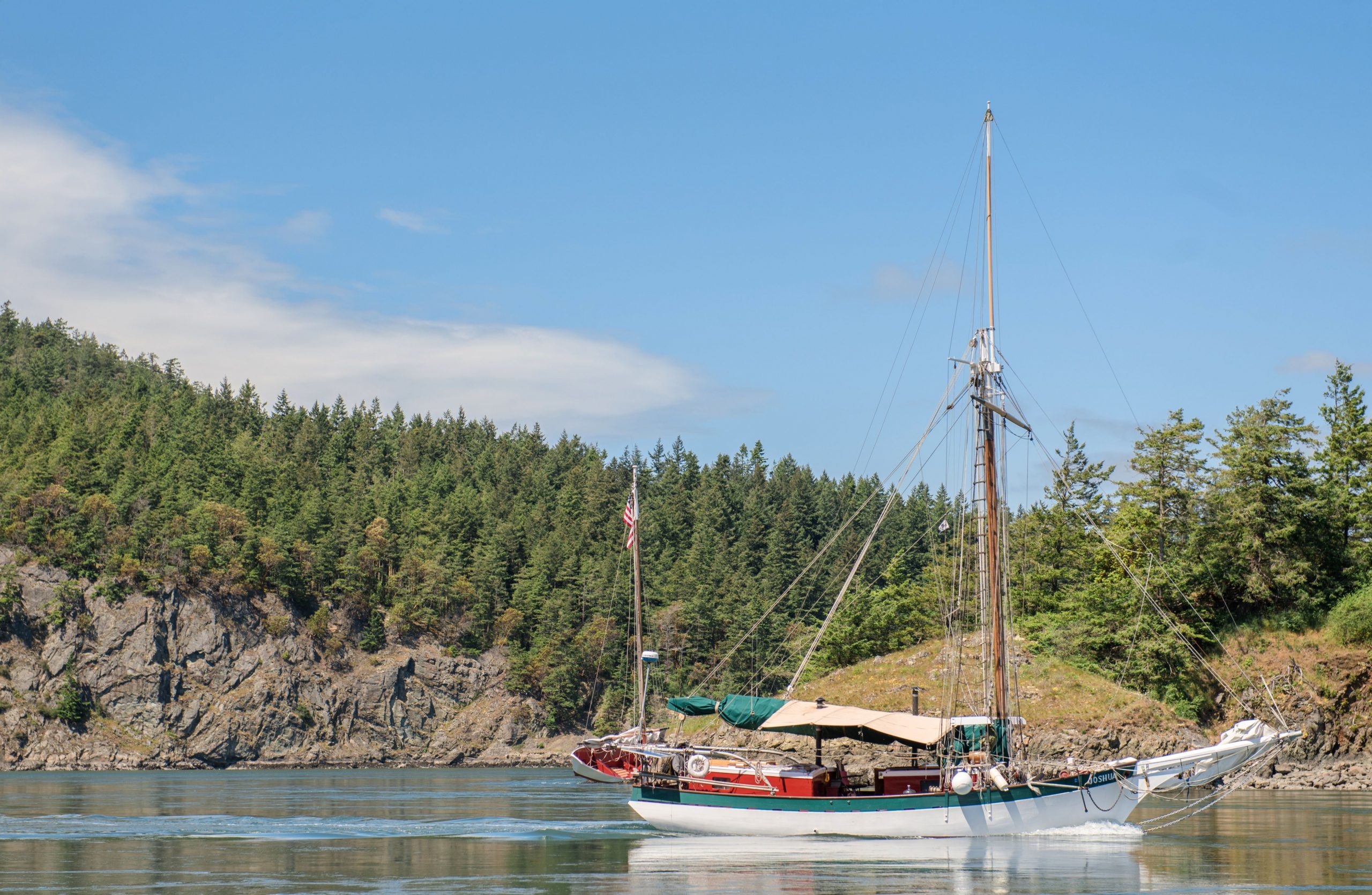
It is no wonder tourists and residents alike enjoy setting their sails and heading out to sea to enjoy our gorgeous Puget Sound waters. Whether by powerboat, sailboat, or even kayak, Whidbey is the perfect place to explore by water. Catch a glimpse of whales feeding in Saratoga Passage, seals cruising under Deception Pass, Eagles soaring past Ebey’s Landing, or if you are really lucky maybe you will catch sight of a magnificent pelican near Honeymoon Bay. It’s not a relaxing endeavor, with some of the world’s most complex currents, thousands of “islands”, and large river deltas to navigate, the Puget Sound requires lots of skill and knowledge to enjoy safely.
Check out the rest of Whidbey’s beautiful destinations from this series here.
Boating Around Whidbey
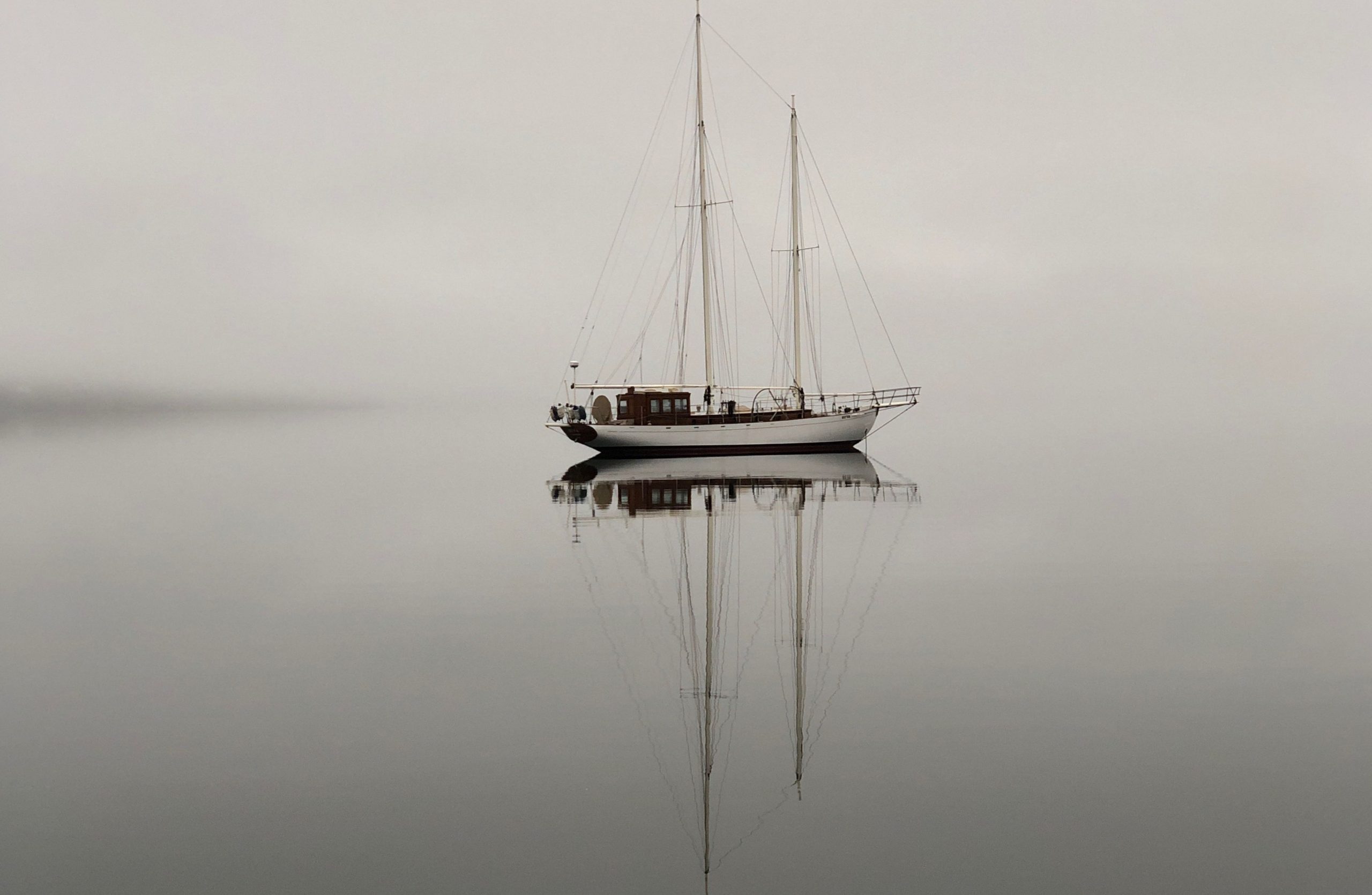
It has been well over 200 years since the waters around Whidbey saw its first sailboat with the explorers of the late 18th century. Just like Captain Vancouver in 1792 people still have the urge to explore this amazing inland waterway from the deck of a boat. Strong currents encourage many to forego sailing in favor of motoring quickly from point A to B. Others like the challenge and quieter method of utilizing the plentiful wind-power. Whichever way floats your boat make sure you get out on the water before the season is over!
Check out the rest of Whidbey’s beautiful destinations from this series here.
View this post on Instagram

 Facebook
Facebook
 X
X
 Pinterest
Pinterest
 Copy Link
Copy Link

